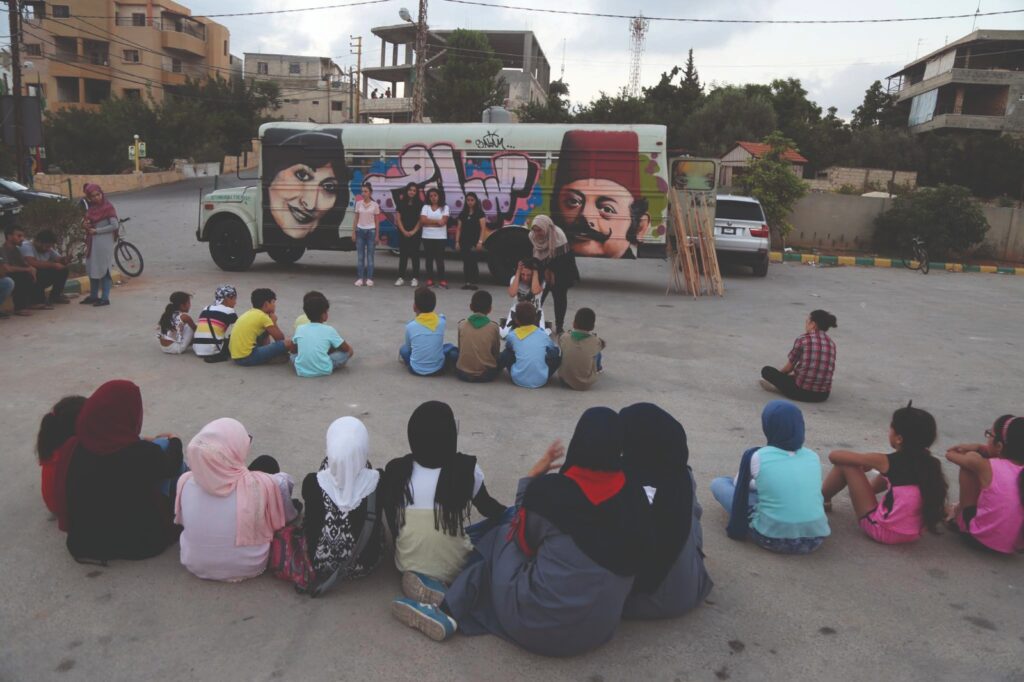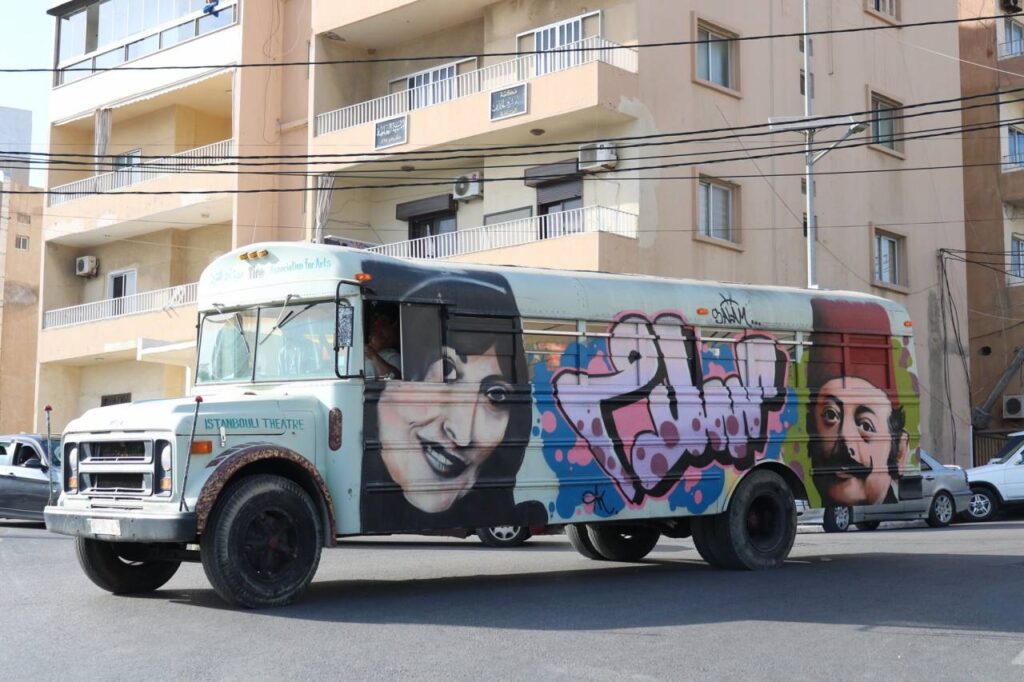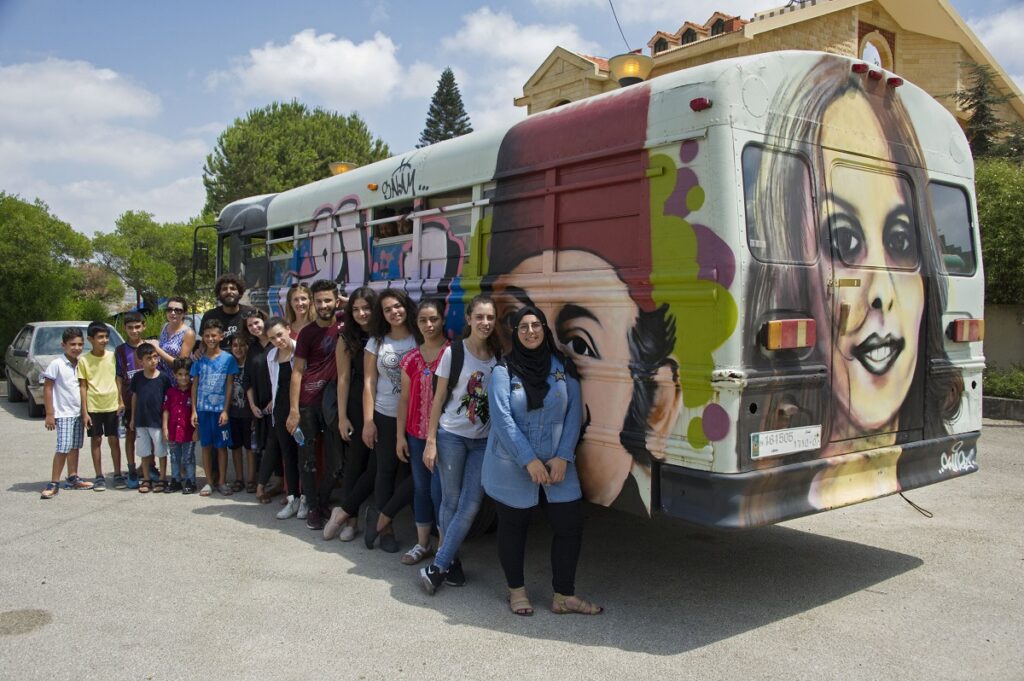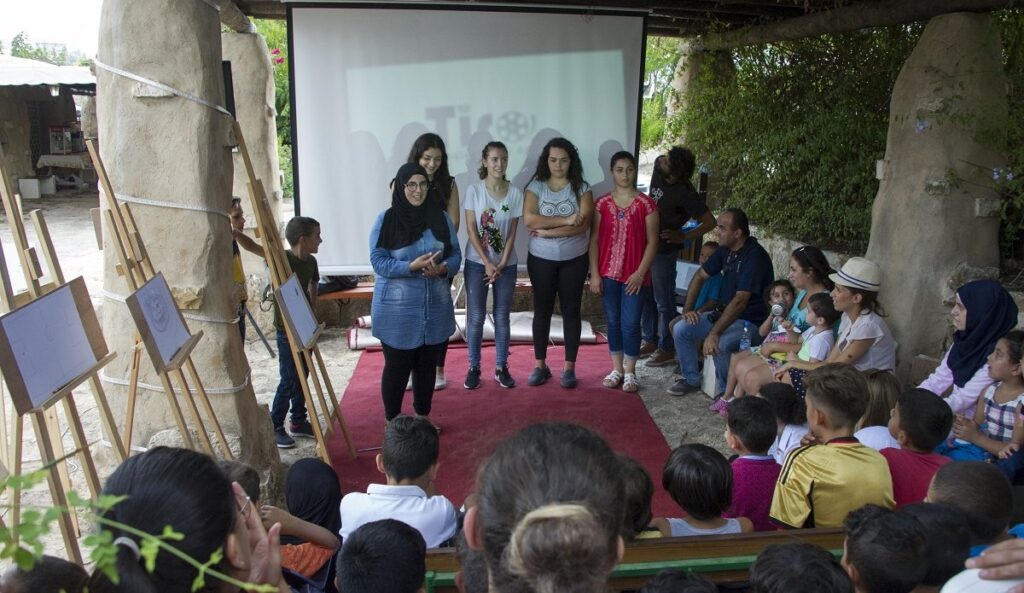Peace art bus
Mobile
Performances
in the Lebanese
Villages and Towns

The idea stemmed from the Ain El Remmaneh incident, also known as the "Black Sunday," in which a bus was targeted with heavy shots on April 13th, 1975 in the Ain El Remmaneh neighborhood, Eastern Beirut. This bus massacre, and other religious disputes between the locals and other countries, led to a civil war for 15 years, from 1975 until 1990. Numerous people died, and the country was in a devastating state. It ended in 1990, as the Lebanese deputies signed the National Reconciliation Accord, which led to power-sharing yet no political or static stability took place. The so-known-as Ain El Remmaneh bus has been in its place since then, rusty with obvious bullet holes and broken glass windows.

Accordingly, as Tiro Association for Arts (TAA) strives for peacebuilding, it came up with the idea of renovating a former school bus to become a mobile cinema and theater. Thus, link between the Lebanese residents’ memories regarding the beginning of the civil war and their actual perseverance to peacemaking, so that the vague and dark memories are converted to brighter ones as well as maintain a better collective memory. Given that this bus is a means for children and youth to understand the grounds of the war, how it could easily and potentially break out, and that they should not be a means for its outbreak, as well as teach them not to repeat past mistakes.
With the help of crowdfunding, TAA has converted this bus, which is traveling to marginalized areas across Lebanon. TAA develops rich screening programs and invites youth of diverse backgrounds to travel with it on a cultural journey. The bus facilitates discussions, films, concerts, storytelling, and the sharing of food. To foster lasting bonds between divided communities, theater workshops and performances are held in, around, and on the bus.
In partnership with UNIFIL, TAA implemented a project within the Peace Art Bus, entitled "Watch Lebanon in Mobile Cinema Festival" in 2018 and 2019. This took place in 20 villages. Currently, the bus is parked in Tyre, where it has also become a local tourist attraction, with many tourists and individuals flocking to take photographs in front of it, as it’s covered with graphic drawings of artistic icons, such as Fairuz, Nasri Shamseddine, Hassan Aladdin, nicknamed Shushu, Hind Abe Elamea, and Charlie Chaplin.
In addition to this, the Peace Art Bus is one of the main indicators to achieve the first outcome of the ongoing project implemented by TAA in collaborative partnership with the DROSOS Foundation, which is the "Mobilize, Involve, and Change for Youth to Strive in South Lebanon" (MICYAS), as it’s a means for the decentralization of culture and the arts and promoting these two aspects using the bus, as well as contributing to the further expansion of TAA’s outreach.

